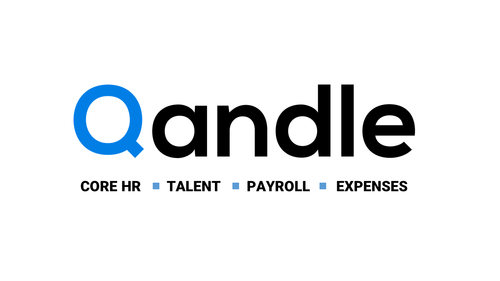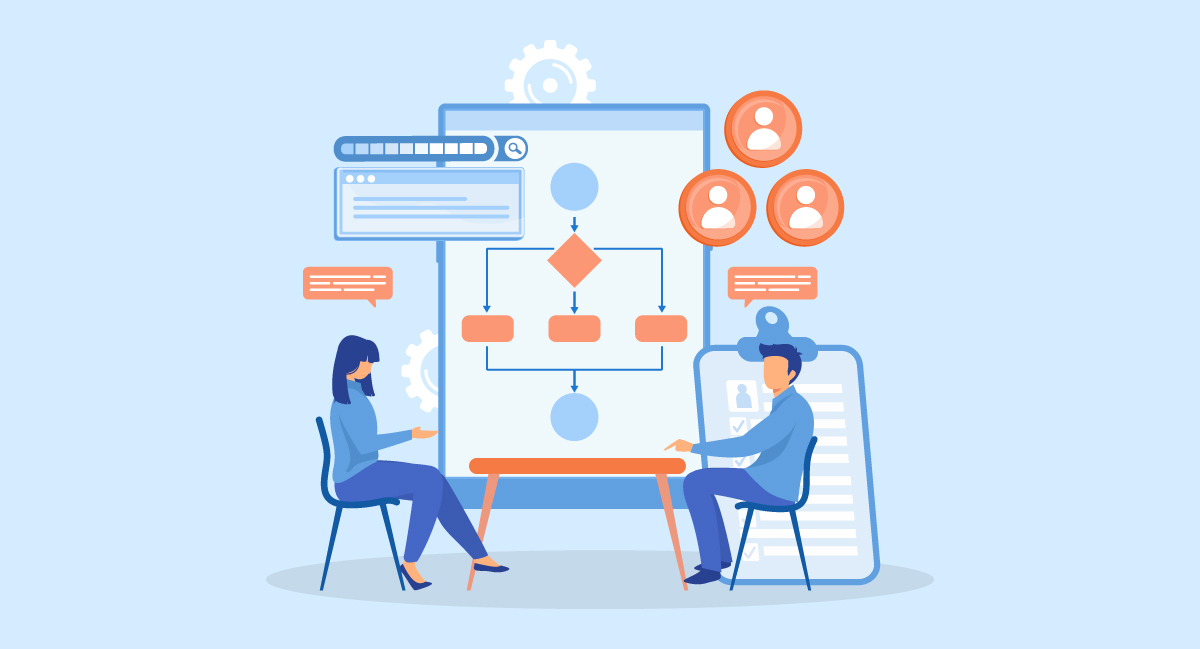Reading Time: 8 Minutes
Published : December 20, 2022
Last Updated: December 20, 2022

Qandle : No. 1 In HR Software
It’s no secret that the HR Department plays a vital role in shaping an organization.
Whether it’s promoting a culture of diversity, establishing guidelines on employee benefits, or handling disciplinary actions, HR administrators play an important role in running their company.
 Looking for Human Resources Software? Check out SoftwareSuggest’s list of the best HR software solutions.
Looking for Human Resources Software? Check out SoftwareSuggest’s list of the best HR software solutions.
In this article, we will go over different HR department structures and explain how they work.
What is an HR Department?
The human resources department is the central body of the organization that helps to manage and implement HR policies regarding employee relations and recruitment, benefits and compensation, training, and employee relations in general.
The HR department works on behalf of the management to provide employees with proper services and facilities. It also plays a crucial role in creating an effective work culture where all employees know their responsibilities, rights, and privileges.
A manager or director usually leads the HR department. It consists of different departments like the personnel department, recruitment department, training department, etc., which provide employees with safety equipment like helmets and boots when needed in an emergency.
The personnel department ensures enough workforce is available for all positions within the organization. The recruitment department identifies and onboard finds the right candidates.
Read on as we are going to talk about the popular HR department structures and HR functions.
What Does an HR Department Do?

There are more than one way to answer this question. The best answer is that an HR department does many things, but most involve managing people.
The first thing an HR department does is manage employees. Thus, it means recruiting, hiring & training new hires to be productive members of the company. It also means managing employees’ performance, including compensation and benefits (e.g., health insurance), performance reviews, and discipline (if necessary).
HR departments also oversee employee relations, including handling workplace disputes and ensuring the company follows all applicable federal and state laws regarding hiring, firing, or disciplining employees. They also help develop policies that protect workers from discrimination or harassment at work or in their private lives.
Finally, they help manage employee communication channels so that employees feel comfortable talking about issues with their supervisors or managers without fear of retaliation from other employees or management officials.
This last point is significant in companies with large numbers of people working together in close quarters; it’s much easier for problems to spill over from one person’s issue.
How Is the Human Resource Department Structured?

-
Centralized Structure
The centralized structure is the most common model used by HR departments. The employees are organized into departments, each with its manager and staff. The managers are responsible for hiring and firing, training, performance management, and compensation.
It’s a good model if you have a small number of employees who need to be managed across multiple locations. It also works if you want to centralize the recruitment process in one location and then distribute the work based on job descriptions to other locations. The downside is that it can make it easier for employees to leverage their skills across locations if they are separate from an integrated team.
-
Decentralized Structure
This human resource management structure is the next step in improving the efficiency of the HR department. It plays a critical role in cutting down on hiring employees’ costs and time. The centralized structure has a head office where all the decisions are taken, and all the employees are under one roof.
But, in this case, management can directly interact with employees without going through a mediator. This helps increase communication between both parties, thereby increasing efficiency in the company.
The decentralized structure also reduces the administrative work involved in hiring employees. In centralized companies, an HR manager is stationed in one location, and he hires employees for various departments. As a result, it leads to a heavy workload for him as he must deal with multiple departments simultaneously.
However, when you adopt a decentralized structure, each department has its HR manager who handles the recruitment process for them only. This leads to better control over HR processes and employee engagement because they have direct access to their managers and understand their problems immediately rather than going through hierarchy levels of management to solve them themselves.
-
Matrix Structure
A structure that has two or more layers of management is called a matrix structure. The top layer is called functional leadership, and the second layer is usually called matrix organization.
In the matrix structure, there are more than one layer in between the functional leaders and their teams. These middle managers can be further grouped into two types: functional leaders and non-functional leaders.
The functional leader is responsible for a specific area of the company’s operations or services, where they have direct responsibility and authority over subordinates. They report directly to upper management and influence financial and human resources decisions. This type of leadership is also known as vertical management because they manage their employees separately from their customers or clients.
The non-functional leader is responsible for providing guidance and direction to the entire workforce rather than just a specific department or individual employee.
This type of leadership helps to create a sense of unity across all levels within an organization by working together toward common goals and objectives.
-
Outsourced Structure
The HR department is outsourced to a third party in this type of structure. The role of the HR department is to focus mainly on company’s core goals & objectives. In contrast, the employee’s position focuses on their department’s specific functions.
This can be very beneficial for companies with many employees who want to focus on other areas within their business. This can also benefit companies that need access to an in-house human resources department or need more time to focus on each employee’s needs.
Types of HR Department Structures

-
Centralized Structure
Here, we have the first human resources structure. A hierarchical HR organizational structure is a method of organizing employees in the hierarchy. This type has more than one level or layer in which employees are placed.
The most senior employees will be located at the top of the hierarchy, followed by middle management, and then lower-level employees who complete tasks and follow instructions from their superiors.
The benefits of this HR organizational structure include the following:
Coordination: As more people are involved in the same task, they must coordinate their actions to ensure everything goes smoothly. This coordination benefits everyone involved in the process by providing everyone is doing their job correctly.
Decision Making: Since multiple people are working together on a project, it becomes difficult for one person to make all the decisions independently. Instead, it’s more efficient to assign decision-making responsibilities among different staff members so that everyone has an equal voice in decisions about how things should be done.
Increased Accountability: Because many people work together on a project, each person is accountable for their part of the work being done and for producing results as part of their role within the organization.
-
Flat Organization Structure
A flat organizational structure is one in which there are no layers of management. No managers and employees report directly to the CEO or a person with the CEO title. The organization is structured so that everyone knows who they report.
A flat organizational structure has many benefits over a pyramid structure. For example, there are fewer layers of management to deal with and, therefore, less waste of time and resources. If you have ever worked at a company with too many management layers, you know how much time it can take away from your day-to-day tasks.
Another Perk that comes with the flat structure is that it is way more. The role of the HR department is to focus on the larger company goals and objective Flexible than a pyramid one. This means that people who don’t get along well with others will have more freedom to work independently from those who do (and vice versa).
A pyramid structure is typically more restrictive because it forces employees into specific roles — e.g., the “stereotypical” manager and subordinate roles such as receptionist/clerk/interviewer, etc.
How to Optimize the HR Department Structure?
In the current global economic climate, businesses are under pressure to reduce costs and improve profitability. An effective HR department structure will be a fundamental part of any organization’s success, without which you’ll struggle to retain a skilled workforce and drive growth.
-
Stick to HR Hiring Timelines
This may seem like a no-brainer, but your HR department must follow the hiring timeline for their role. This will ensure that you can recruit and onboard new employees within the same timeframe as your competitors.
Here are certain examples of when this is important:
New hires – As soon as you’re done with an interview process, it’s important to let your new hire know that they’ll be expected to start working within a week or two of being hired.
Hiring managers – If you’ve hired a new HR manager, give them time to train the HR team before asking them to begin managing people directly. This allow to better understand the roles and responsibilities
-
Define Roles
It can be tough to keep track of all the roles in your company and how they interact, but everyone must understand exactly what each role entails to provide the best possible service to their team members and clients.
Consider creating job descriptions for each role before moving forward with recruiting or hiring anyone else into an existing position or creating a new one entirely.
-
Invest in HR Software

The most comprehensive solutions will help you manage your HR department, from job listings, filing paperwork, recruiting, and hiring to building a team and assigning tasks. So, do thorough research and invest in the best HR software to create streamlined processes.
These HR automation solutions also allow you to review employee performance and determine whether they meet company goals. They’ll also help monitor company profitability, which is critical for your growth.
-
Hire Specialists
The HR department is responsible for recruiting, interviewing, and onboarding the best candidate for the job. This is a paramount important task, thereby, beads to be carried with utmost care. The best way to do this is by hiring specialists who can help in the recruitment process.
In addition, hiring HR specialists helps you achieve your HR goals faster, as these specialists focus on specific areas of your business. They are also better equipped to deal with complicated tasks such as data analysis and administering training sessions.
Conclusion
An HR department that is both well-administered and structured is a competitive advantage for any company. It’s also an enormous help to the rest of the organization in ensuring compliance with regulatory requirements, increasing employee satisfaction and loyalty, and planning workforce management.
We hope the HR department structures explained earlier will prove helpful in deciding on the right one that aligns with your specific goals.
[adsanity_group align=’alignnone’ num_ads=1 num_columns=1 group_ids=’15192′]
Need Any Technology Assistance? Call Pursho @ 0731-6725516







